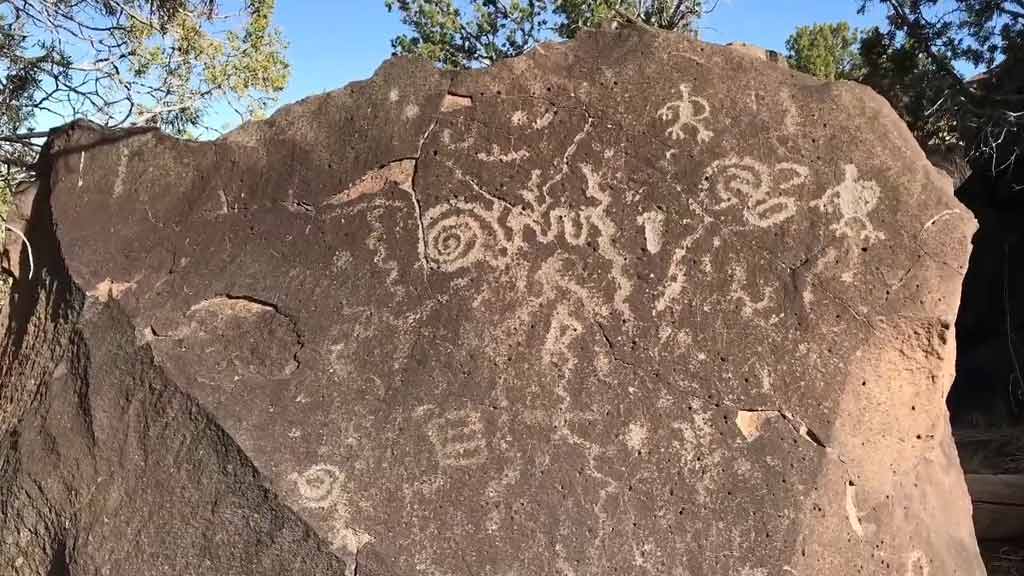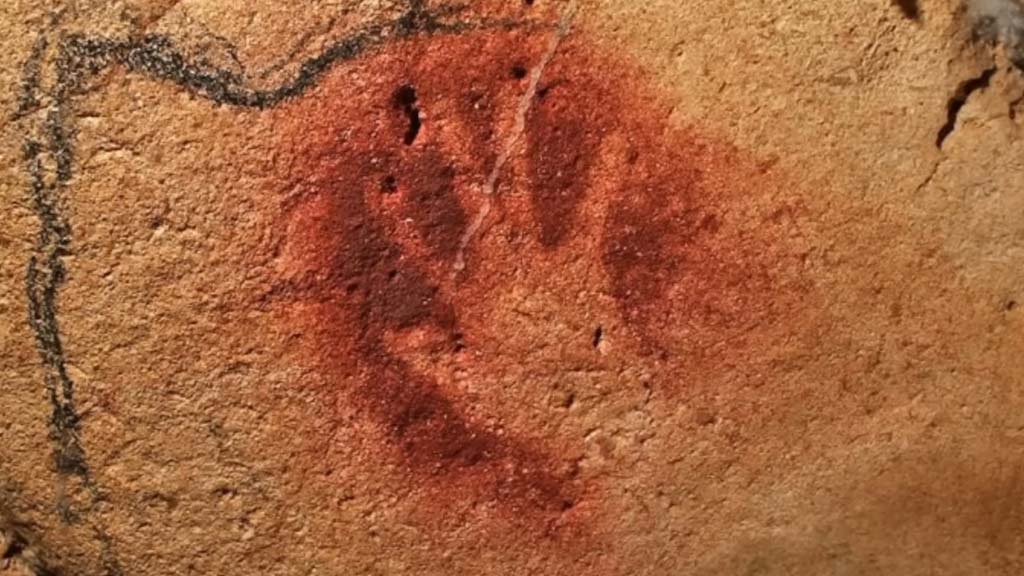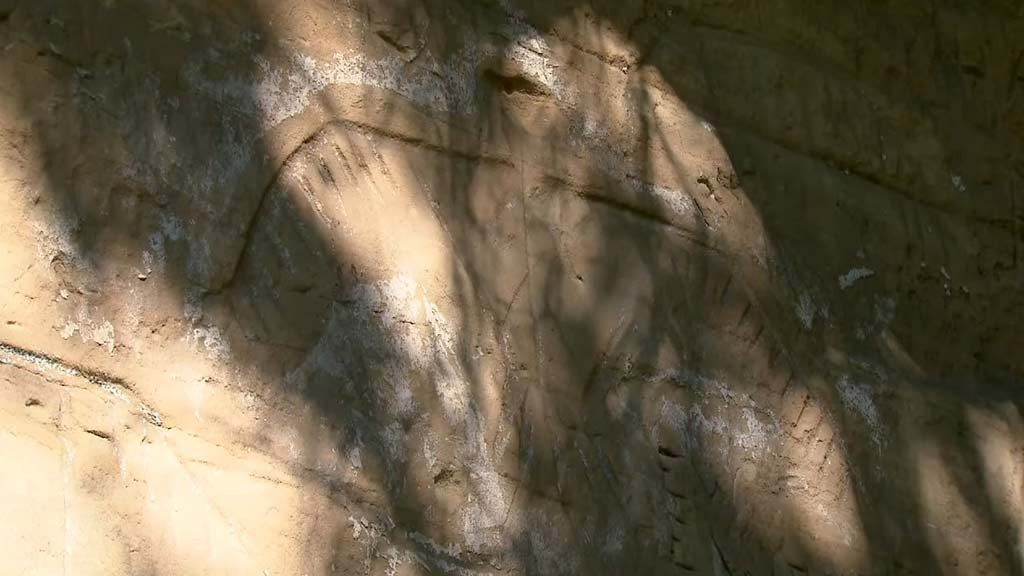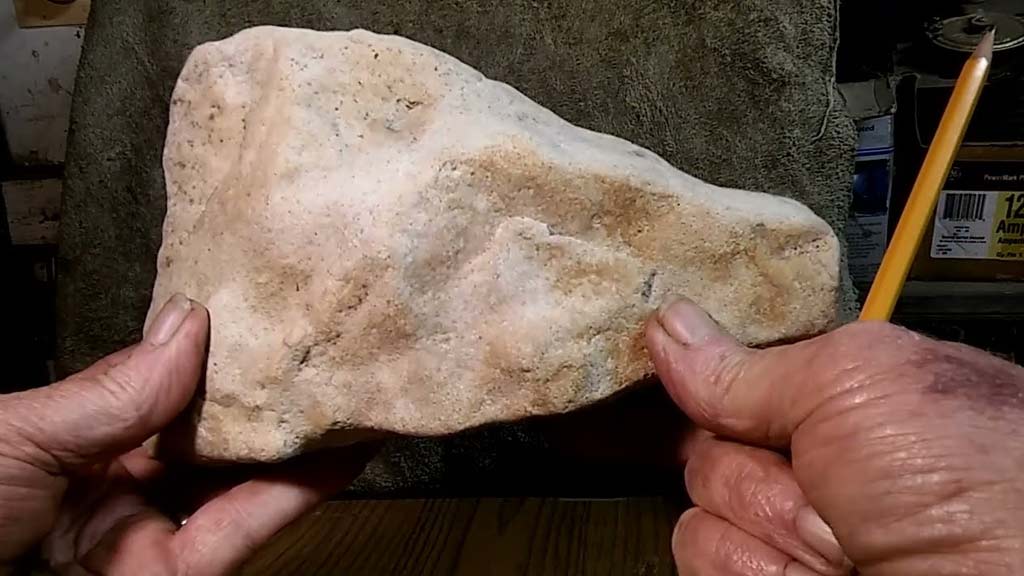Native American rock drawings, also known as petroglyphs, stand as ancient testimonies to the rich cultural heritage of indigenous peoples across the Americas.
Etched or pecked onto stone surfaces, these enigmatic symbols serve as visual narratives of spiritual beliefs, societal customs, and historical events spanning millennia.
From the vast deserts of the Southwest to the rugged cliffs of the Pacific Northwest, these artworks offer profound insights into the intricate relationships between humans, nature, and the cosmos.
Each symbol and motif holds layers of meaning, shaped by the diverse cultures, landscapes, and traditions of the peoples who created them.
Exploring Native American rock drawings provides a window into the enduring legacies of indigenous cultures and their profound connections to the land.
What Is Native American Rock Drawings?
Native American rock drawings, also known as petroglyphs, are ancient symbols and images etched or carved into rock surfaces by indigenous peoples across the Americas.
These drawings often depict scenes from daily life, spiritual beliefs, hunting scenes, and celestial events. Found in various locations, from deserts to caves, they offer glimpses into the cultures and traditions of the people who created them.
Petroglyphs serve as historical records, telling stories of the past and preserving the heritage of Native American communities.
These intricate artworks not only showcase artistic expression but also provide valuable insights into the lives of ancient civilizations.
Native American Rock Art Symbols Meanings
Native American rock drawings, also known as petroglyphs, offer a captivating glimpse into the cultures and histories of indigenous peoples across the Americas.
These ancient symbols, etched or pecked onto stone surfaces, serve as visual records of spiritual beliefs, cultural practices, and societal values.
Each symbol carries its own significance, often deeply rooted in the mythology, cosmology, and daily life of the people who created them.
Spirals

Spirals are not only visually captivating but also rich in symbolism across Native American cultures. In addition to representing life cycles and interconnectedness, spirals may embody the concept of eternal movement and growth.
Some interpretations suggest that the spiral symbolizes the journey inward, towards self-discovery and spiritual enlightenment.
It can also be seen as a metaphor for the cyclical patterns observed in nature, such as the changing seasons or the movement of celestial bodies.
Sun
The sun holds a central place in the spiritual beliefs and cosmologies of many Native American tribes. Its warmth and light are not only essential for sustaining life but also carry profound symbolic meanings.
In rock art, depictions of the sun often showcase its radiating rays, symbolizing energy, vitality, and divine power.
Some interpretations associate the sun with specific deities or spiritual beings, while others view it as a universal symbol of creation and renewal.
Animals

Animals play various roles in Native American mythology and symbolism, reflecting the diverse landscapes and ecosystems inhabited by indigenous peoples.
The choice of animals depicted in rock art often reflects their significance within specific tribal traditions.
For example, the buffalo holds immense importance for Plains tribes, symbolizing abundance, sustenance, and the interconnectedness of all life on the Great Plains.
Meanwhile, the coyote may represent cunning and adaptability, traits valued in many Native American cultures.
Handprints

Handprints found in rock art sites offer a tangible connection to the individuals who created them. These ancient imprints may have been made as part of initiation rituals, healing ceremonies, or as markers of personal identity.
In some cases, handprints are accompanied by other symbols or motifs, suggesting their role in conveying messages or invoking spiritual blessings.
The presence of handprints in rock art underscores the significance of human touch and interaction with the natural world.
Labyrinths
Labyrinths are intricate geometric patterns that invite contemplation and reflection. In Native American rock art, labyrinthine designs may represent the complexities of life’s journey, with twists and turns symbolizing challenges and opportunities for growth.
Walking or tracing a labyrinthine pattern can be a meditative practice, fostering a sense of inner peace and clarity.
Some interpretations suggest that labyrinths in rock art serve as spiritual maps or guides, leading the viewer on a symbolic quest for wisdom and enlightenment.
Thunderbird

The Thunderbird holds a prominent place in the mythologies of many Native American tribes, often depicted as a mighty bird with wings spanning the sky.
In addition to its association with thunder and lightning, the Thunderbird symbolizes power, protection, and divine intervention.
Its presence in rock art reflects the reverence and awe with which indigenous peoples regarded the forces of nature.
The Thunderbird is sometimes depicted alongside other symbols, such as the sun or the spiral, further emphasizing its importance within the cultural landscape.
Circles and Circles with Dots
Circles are universal symbols found in cultures around the world, representing wholeness, unity, and the cyclical nature of existence.
In Native American rock art, circles may appear in various forms, from simple geometric shapes to elaborate mandala-like designs.
Circles with dots at their centers may symbolize sacred sites, ritual gatherings, or celestial bodies such as the sun or the moon.
These symbols serve as reminders of the interconnectedness of all life and the sacredness of the natural world.
Human Figures

Human figures depicted in Native American rock art offer glimpses into the daily lives, spiritual beliefs, and cultural practices of indigenous peoples.
These figures may represent ancestral heroes, mythical beings, or ordinary individuals engaged in hunting, gathering, or ceremonial activities.
The style and symbolism of human figures in rock art can vary widely depending on the region, tribe, and historical period.
Some interpretations suggest that human figures serve as intermediaries between the physical and spiritual realms, bridging the gap between humanity and the divine.
Water
Water symbols in Native American rock art reflect the vital role of water in sustaining life and fostering spiritual renewal.
From flowing rivers to sacred springs, water sources are often depicted in rock art as symbols of abundance, purification, and vitality.
Water symbols may also appear in abstract forms, representing the fluidity and adaptability of life’s journey.
In desert regions, where water is scarce, depictions of water sources in rock art serve as reminders of the enduring importance of conservation and stewardship of natural resources.
FAQs
What Is Native American Rock Art?
Native American rock art refers to the ancient practice of creating symbolic designs, images, and markings on stone surfaces by indigenous peoples across the Americas.
These artworks, known as petroglyphs or pictographs, hold cultural, spiritual, and historical significance, offering insights into the beliefs, traditions, and daily lives of Native American communities.
What Are the Native American Symbols on Rocks?
Native American symbols on rocks encompass a wide range of motifs and designs including spirals representing life cycles, animals symbolizing strength and wisdom, handprints signifying human presence and connection, and celestial motifs like the sun and moon representing spiritual forces and natural phenomena.
What Are Ancient Rock Drawings Called?
Ancient rock drawings are commonly referred to as petroglyphs or pictographs.
Wrap Up
Native American rock drawings, with their intricate symbols and timeless narratives, offer invaluable insights into the beliefs, traditions, and histories of indigenous peoples.
These petroglyphs, scattered across the landscapes of the Americas, serve as tangible links to the past, connecting present-day communities with their ancestors and cultural heritage.
As repositories of spiritual wisdom, artistic expression, and ecological knowledge, these ancient artworks continue to inspire awe and fascination.
However, they also face threats from environmental degradation, vandalism, and looting. Preserving and protecting these sacred sites is not only essential for safeguarding cultural heritage but also for fostering cross-cultural understanding and respect.
By studying and appreciating Native American rock drawings, we honor the resilience and creativity of indigenous peoples and reaffirm the importance of preserving their cultural legacies for future generations to cherish and learn from.
Jaclyn Lowe